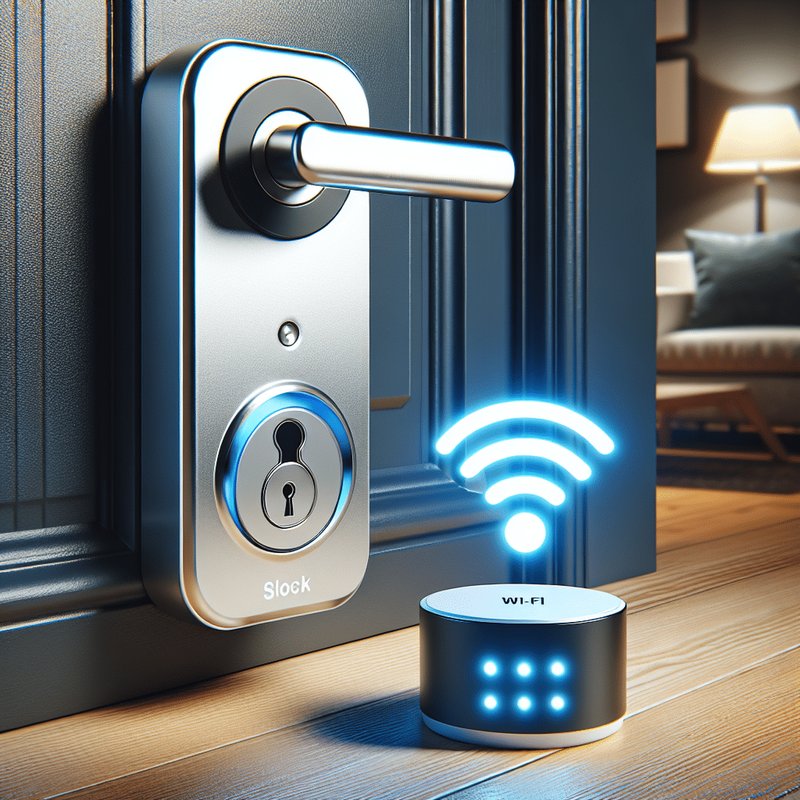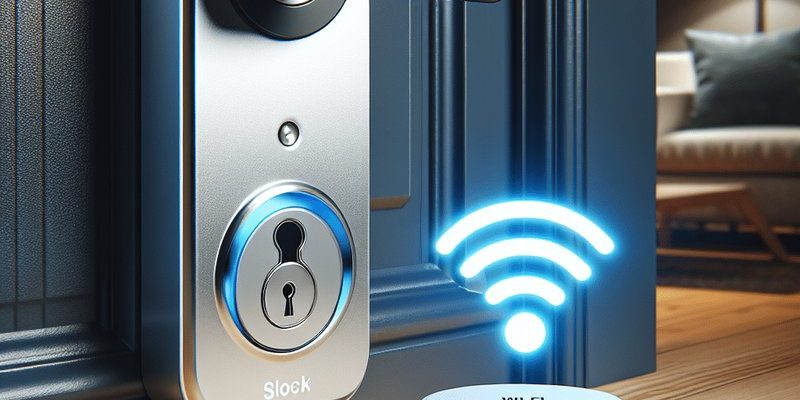
Honestly, figuring out a smart lock’s signal strength can feel a bit like chasing gremlins. Is it your router acting up? Are the batteries low? Is it just too many signals flying around your house? The good news is, with a little know-how and a handful of easy tests, you can get to the bottom of your smart lock’s connection problems—without a tech degree or a trip to the hardware store.
Let me break down the best ways to test a smart lock’s signal strength, whether you’re dealing with a Yale Assure SL, an August Wi-Fi Smart Lock, or just about any other brand. We’ll cover what really matters, why signal strength is such a big deal, and how to troubleshoot those frustrating “lock won’t connect” moments that happen at the worst times.
Why Signal Strength Matters for Your Smart Lock
When it comes to smart locks, signal strength is the backbone of convenience and security. If the signal is weak—whether it’s Bluetooth, Wi-Fi, or Zigbee—you’ll deal with laggy responses or failed unlock attempts. That’s not just irritating. It defeats the point of having a smart lock in the first place.
Imagine this scenario: You’re carrying groceries, trying to unlock your Schlage Encode from your driveway. The app spins, the lock doesn’t budge, and you’re left jostling bags on the porch. It’s usually a signal issue, not the lock itself. Smart locks often rely on more than one connection type (think Wi-Fi for remote control, Bluetooth for local pairing, even Z-Wave in some models), each with strengths and annoyances.
A strong, steady signal ensures:
- Quicker lock/unlock commands
- Reliable syncing with your app or remote
- Successful code entry and updates
- Remote access whenever you need it
Weak signal means frustration. Sometimes, it can even leave your door stuck unlocked if the system fails mid-task. That’s why checking—and improving—signal strength is worth the effort.
How to Check Built-In Signal Strength Indicators
You might be surprised, but a lot of modern smart locks have built-in indicators for signal strength. These might not be obvious at first glance, but once you know what to look for, they’re super handy.
Here’s the thing: Some locks display a signal icon or bar right in their companion app (like August’s app on your phone), often buried in the settings or under device info. This is your quickest look into the lock’s health. If you’re using a Wi-Fi connected model (like August Wi-Fi Smart Lock or Yale’s Wi-Fi series), check the app settings for something like “Connection Status” or “Signal Strength”.
If your lock uses Bluetooth, you won’t usually see a signal bar, but you can spot trouble if the lock:
- Takes a long time to respond to commands
- Randomly disconnects from your phone
- Fails to sync recent code or access changes
For Z-Wave or Zigbee locks, the home automation hub (like SmartThings or Wink) often includes basic signal diagnostics, sometimes as simple as “Good,” “Fair,” or “Poor.”
For most folks, the app’s signal indicator is your best friend for quick troubleshooting—just don’t forget to check it before spending an hour moving your router.
Using Your Phone to Test Bluetooth or Wi-Fi Range
Let’s talk real-world testing. No fancy tools required—your phone is often all you need, especially for Bluetooth or Wi-Fi smart locks.
To test Bluetooth strength, stand right next to the lock and try unlocking it with your app or remote. Then, take a few steps back and try again. Notice how far you can walk before the lock stops responding or the app gives you an error. Most locks are happiest within about 10–15 feet for Bluetooth, but walls and appliances can shrink that range fast.
For Wi-Fi models, check your phone’s Wi-Fi bars in the spot where the lock’s installed. If your phone’s barely hanging on to a signal, your lock’s probably struggling too.
- Try making a call or loading a webpage while standing at the lock
- Watch for dropped connections, slow speeds, or “can’t reach network” errors
- If your phone drops signal, the lock is likely out of reliable range
It’s not a perfect test, but if you’re having connection issues, matching up where your phone loses signal can give you instant clues.
Testing Signal Strength With Manufacturer Tools
If you want something a bit more technical, many leading brands offer diagnostic tools built right into their systems. For example, Yale Access and August apps include advanced troubleshooting menus that let you run connection tests, reset, or even pair your lock again to check signal at different spots.
Here’s how you can typically use these tools:
- Open the companion app (like the August Wi-Fi app or Yale Access app)
- Look for “Device Settings” or “Advanced Diagnostics”
- Tap on “Check Connection” or similar options
- Follow on-screen instructions to evaluate signal
Many apps walk you through a step-by-step process, showing a signal meter or giving clear messages like “Excellent,” “Could be better,” or “Poor connection detected.” Sometimes, they’ll suggest moving your Wi-Fi router, changing batteries, or updating firmware as quick fixes.
If your lock supports code sharing or guest access, these diagnostics can help ensure new codes sync up reliably—a weak signal often causes failed code updates, which is a real headache for Airbnb hosts and busy families.
Physical Barriers and Interference: What Hurts Signal the Most?
You might be wondering—what actually causes those random signal drops or dead spots? Turns out, it’s not always your lock or router’s fault.
Physical barriers are a big culprit. Thick doors, metal frames, concrete, and even big appliances between your lock and router can kill signal. For Bluetooth locks, the more walls (especially with wiring or insulation), the more likely you’ll have sync or pairing issues with your remote or app.
Other wireless devices—from microwaves to baby monitors—can also interfere, muddying up the airwaves and blocking smart lock signals. Even crowded Wi-Fi channels make it tough for your lock to reach your network.
Here’s what to check if you’re having issues:
- How many walls or heavy objects sit between your lock and router?
- Are there lots of wireless devices in the area (smart speakers, baby cams, etc)?
- Is your lock on a metal door or frame? (Metal is notorious for blocking signals)
Sometimes, just moving your router a few feet or adding a Wi-Fi extender does the trick. If you can, avoid tucking routers behind TVs or inside cabinets, and keep locks away from thick metal or electrical panels.
Testing with Third-Party Tools and Hardware
If you’re the type who likes gadgets, you can step up your testing game with third-party tools. Some folks use Wi-Fi analyzers (apps like NetSpot or Wi-Fi Analyzer) to walk around the house and map where the signal is weakest.
For Bluetooth locks, you’ll find phone apps that measure Bluetooth Low Energy (BLE) signal strength in real time (look for RSSI meters in your app store). While these tools aren’t specifically made for smart locks, they let you see just how much your environment is hurting your lock’s performance.
You might try:
- Walking slowly from your router to the lock with a Wi-Fi analyzer app running
- Moving the lock temporarily to a different door or spot to compare
- Using a Bluetooth scanner app to track signal drops and reconnects
If you’re troubleshooting a lock that supports both Wi-Fi and Bluetooth—like the August Wi-Fi Smart Lock—comparing both signals in the same spot can help you decide which mode is working best in your home.
Batteries Matter: How Power Can Impact Signal Strength
Believe it or not, low battery is one of the sneakiest causes of signal problems. If your smart lock’s batteries are running low, it may not have enough juice to send a strong signal for reliable sync, pairing, or code updates.
Here’s what happens: As battery levels drop, the range and reliability of both Wi-Fi and Bluetooth dip. You might notice that the lock responds slower, drops connections, or fails to update changes sent from your app or remote.
Many locks (like Yale, August, or Schlage) show battery status in their apps. If your lock is sluggish or drops off your network frequently, check those levels—changing out the batteries can fix more connection issues than you might think.
- Always use high-quality fresh batteries—cheaper brands or old stock can make things worse
- After changing batteries, reboot or re-pair the lock if problems persist
- Some locks may require a full reset for the signal to bounce back, especially after a power interruption
If nothing else seems to help, address the power source before tearing apart your Wi-Fi setup.
When and How to Reset, Pair, or Update Your Smart Lock
Sometimes, signal issues refuse to budge—no matter how hard you try. This is where the classic tech move comes in: reset, pair, or update your smart lock.
Let me explain: Over time, bugs in the lock’s firmware or app can cause pairing issues, failed code sync, or random disconnects, even if your Wi-Fi or Bluetooth seems fine. Here’s the smart way to tackle it:
- Reset the lock using the app or physical reset button (check the user manual)
- Remove the lock from your app or smart home system, then pair it again as a new device
- Update the app and lock firmware—manufacturers release fixes for known bugs and signal problems
For example, August regularly updates their app and firmware to address connectivity complaints, and Yale pushes out patches for Wi-Fi reliability. Resetting and re-pairing helps the lock reestablish a clean connection, often restoring full signal strength and syncing any codes or remotes you’ve set up.
Only go this route if easier fixes (like moving your router or swapping batteries) didn’t work. It’s a bit of a hassle, but for persistent issues, a full reset can work wonders.
Comparing Universal vs. Brand-Specific Remotes and Hubs
You might be tempted by universal remotes or smart hubs that claim to work with any lock. They’re handy, but they’re not always the best fix for signal strength issues.
Brand-specific remotes or hubs (like the Yale Connect Bridge or August Wi-Fi Bridge) are designed to maintain a more stable connection with their smart locks, often using optimizations you won’t get with a generic system. That means:
- Quicker sync and code updates
- Better reliability for remote unlocking
- Dedicated troubleshooting tools in the official app
Universal remotes offer broad compatibility, but sometimes at the cost of speed, battery life, or easy pairing. They’re great for mixed-brand homes, but if you want the most robust signal and smoothest user experience, sticking with your lock’s official accessories is usually worth it.
If you’re troubleshooting a lock paired to a universal hub and can’t shake connection issues, try switching to the brand’s specific bridge or app—you’ll often see an immediate improvement in signal and reliability.
Wrapping It Up: Making Your Smart Lock Work Like It Should
Signal strength might seem like a technical nitpick, but for smart locks, it’s central to everything—security, speed, and peace of mind. Whether you’re using an August, Yale, or Schlage, always start simple: check the app’s indicators, test with your phone, rule out barriers, and keep those batteries fresh. If problems persist, try the manufacturer’s diagnostics, third-party tools, or a good old-fashioned reset and re-pair.
Remember, most connection headaches have a fix—you just have to know where to look. With a little patience, you’ll have your smart lock syncing, updating codes, and unlocking remotely the way it was meant to—leaving you to worry about more important things than whether your front door is actually locked.
